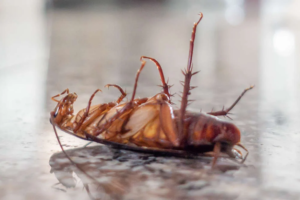Fall in Tinton Falls bring a welcome change of pace. Residents pull out sweaters and prepare for the colder months when this season comes. But certain pests may also seek warmth inside local homes. These uninvited guests will survive the winter indoors until spring arrives. They slip into walls, attics, and basements.
Insects and rodents look for heat and protection from frost as outdoor temperatures drop. The older and newer homes in the city give pests plenty of entry points. Also, they decide to overwinter in homes due to the presence of moisture, food sources, and warmth. The problem may begin small in late September and grow quickly by November, as more pests follow scent trails or pheromones left by others that have already found refuge. That is why homeowners may act proactively and ensure they have a pest control company they can call when they deal with an invasion. Pest experts at Alliance Pest Services have experience in dealing with different types of overwintering pests and can employ treatments tailor to the specific issue. Those who want to learn more about their services should visit alliancepestservices.com. Below are common overwintering pests in Tinton Falls:
Stink Bugs
Stink bugs gather on sunny walls when temperatures drop. From there, they crawl through cracks in siding, attic vents, or window frames to spend the winter indoors. These creatures do not cause structural harm, but their sheer numbers can be overwhelming. They may emerge from hiding during mild winters, buzzing across living rooms or landing on curtains. Crushing them releases a strong odor, which is why they must be vacuumed. Also, homeowners must seal gaps in siding and install mesh screens over attic vents to reduce entry points for stink bugs.
Boxelder Bugs
Boxelder bugs feed on boxelder, maple, and ash trees through the summer but move indoors as soon as cool nights arrive. These black and red insects gather in large clusters on exterior walls before slipping inside through cracks or attic gaps. They remain dormant until spring. Their droppings can stain curtains and walls.
Cluster Flies
Cluster flies differ from houseflies in that they spend most of their lives outdoors, feeding on earthworms. But they head indoors to escape the cold in fall. They prefer attics, wall voids, and upper floors, often gathering in large numbers. Unlike common flies, cluster flies move sluggishly once inside. They don’t reproduce indoors but can create a nuisance when they buzz around windows on warm winter days.
Carpenter Ants
Carpenter ants can remain active inside homes if they find warmth and moisture. They move deeper into walls or floors to establish satellite nests in the fall. Carpenter ants don’t eat wood but tunnel through it to create nesting galleries. They use damp or rotting wood around window sills, decks, or plumbing areas as shelter.
Mice and Rats
Mice and rats search for indoor warmth and food when it gets cold outside. They squeeze through holes as small as a dime, nesting behind appliances, inside insulation, and under stored boxes. They breed through winter, leaving behind droppings, gnaw marks, and shredded materials. Rodents also pose health risks by contaminating surfaces and spreading bacteria.
Spiders
Fall is prime time for spiders to migrate indoors as insect prey becomes scarce outdoors. Common house spiders, cellar spiders, and wolf spiders turn up more frequently during this season. They seek dark, quiet spots like basements, attics, or storage rooms. Most species do not pose a threat, but their webs collect dust and can make spaces feel less inviting.
Lady Beetles
Multicolored Asian lady beetles may confuse homeowners who mistake them for native ladybugs. During fall, they gather on sunny walls and window screens before finding cracks to enter attics or upper floors. These bugs cluster in large groups, remaining dormant until spring. They may fly toward light sources or gather near windows on warmer days, leaving behind faint yellow stains when disturbed. Homeowners must caulk small openings around window frames and check attic vents for gaps to prevent these pests from making their homes their own.


